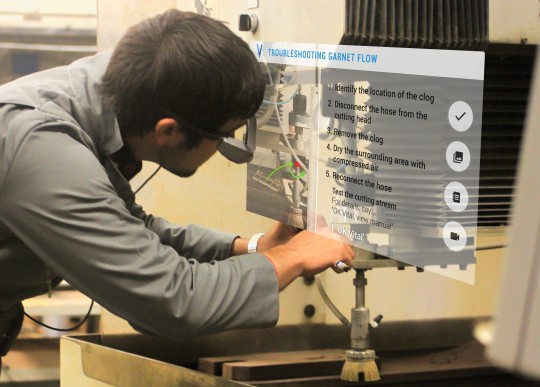-

The concept of augmented reality has been around since the early 90s. However, its availability to the public has been fairly recent. The concept is simple; augmented reality lets you place computer-generated images or information on top of what you see in real-time as it is viewed through the lens of a wearable device or on the screen of a smartphone, tablet or computer.
Many smart glasses and apps are used for gaming and entertainment and rely heavily on the use of AR technology to enhance the experience. You may have heard of Ikea’s app, Ikea Place, used to enhance the shopping experience and help users visualize what furniture would look like in their home without the hassle of bringing it home and building it. Pokemon Go is yet another popular app that uses AR to enhance the real world around the user.
AR-based apps are used beyond the retail and gaming industries too! AR has been emerging in travel apps, to provide information about different destinations in real time, cutting down the need for tour guides. AR is used in education to enhance research initiatives and to bring students living in different parts of the world to the same classroom. With the 2013 launch of Volkswagen’s, MARTA app, augmented reality is becoming widely used in the Manufacturing Enterprise, optimizing quality control, repair, and training processes.
Developing apps and software that utilize AR isn’t just unicorns and enchantments, effectively utilizing software development kits built specifically for AR is where the real magic happens. These kits are also known as AR kits. There several types of AR kits - some are open source SDK as well as platform-dependent AR kits. Each kit has specific features that make the AR experience the engineer hopes to create come to life.
Below you will find several SDKs that are integral to building a successful Augmented Reality app and user experience.
Popular platform specific AR Software Development Kits
As the name suggests, the AR kit was introduced by iOS 11 for app development for Apple products such as the iPhone and iPad.
The AR core is for Android and lets you implement augmented reality concept perfectly. You can use it to make transformational apps for android. Augmented reality lets you bring the idea that you have for apps right out of the screen.
It is one of the most popular AR SDK used for AR app developed specifically for mobile devices. It uses computer vision technology along with 3D objects and the real-time environment. The real-time object or space is scanned and captured through the camera of the mobile device and the 3D image is positioned on it in such a manner that the user perspective of the image and object corresponds with each other making the object a part of the real environment.
This AR kit uses JavaScript for both Android and iOS. It is available with Unity and Cordova extensions as well. It uses image location, recognition, and geolocation, along with SLAM which is an instant tracking technology.
It is one of the most used SDK for AR app development. It is popular for its efficiency and, as its name suggests, ease of use. Its API enables the developers to meet the challenges of AR development.
This is a modular open source SDK which supports all major platforms. It includes OpenGL ES2x support with GPS and compass integration. It also uses automatic camera calibration utilities. It makes collaboration with new IoT devices, such as smart glasses, easy. AR Toolkit has optical see-through support as well.
Other popularly used SDK are:
Selecting an AR Content Management System
There are many web-based platforms and websites that offer an AR solution for industrial manufacturing and managing content.These are used for development aimed at standalone PC and a more integrated system. All of these, like other AR software, use 3D imaging and modeling along with geolocation features. Some of these platforms are:
After selecting the perfect SDK and CMS, it’s time to put them together to change the world.